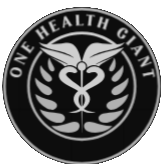Introduction to Growth Hormone Secretagogues
Growth hormone secretagogues (GHS) represent a distinctive class of compounds designed to stimulate the secretion of growth hormone (GH) from the pituitary gland. These substances play a critical role in various physiological functions such as metabolism, body composition, and overall health. Among the most notable GHS are peptides, including sermorelin and ipamorelin, which are recognized for their efficacy in promoting growth hormone production. This has led to significant interest in their implications for health, fitness, and potential therapeutic applications.
Sermorelin peptides, for instance, function by mimicking the action of growth hormone-releasing hormone (GHRH), which directly stimulates the pituitary gland to increase GH levels. The enhanced secretion of growth hormone leads to multiple benefits, including improved muscle mass, fat loss, and enhanced recovery. This makes Sermorelin a popular choice for individuals seeking to achieve better fitness outcomes or overcome age-related declines in hormone production. Moreover, the versatility of sermorelin injections, which allow for easy administration, makes them accessible for both medical and personal wellness applications.
Ipamorelin, on the other hand, is another peptide that demonstrates a potent ability to elevate GH levels without significantly increasing cortisol or prolactin. This attribute makes ipamorelin a desirable option for those aiming to avoid the potential negative side effects associated with other growth hormone secretagogues. Both ipamorelin and sermorelin dosages must be carefully managed to achieve optimal results, and understanding their mechanisms of action is crucial for users.
The growing popularity of these peptides has led to an increased focus on their potential benefits, such as weight loss and enhanced recovery post-exercise. Reviews of sermorelin highlight its effectiveness, yet it is essential to contextualize its use within the larger domain of growth hormone secretagogues. This overview sets the stage for a deeper exploration of the unique properties of ipamorelin and sermorelin, their comparative roles, and how they fit into the evolving landscape of health and fitness. Understanding these elements is critical for anyone considering their use for performance enhancement or anti-aging purposes.
What is Ipamorelin?
Ipamorelin is a synthetic peptide that belongs to the class of growth hormone secretagogues. Specifically, it is a pentapeptide, composed of five amino acids that mimic the action of ghrelin, a hormone known to stimulate appetite and growth hormone release. The chemical structure of Ipamorelin enables it to selectively bind to the growth hormone secretagogue receptor (GHSR), leading to the stimulation of endogenous growth hormone (GH) secretion from the pituitary gland. This mechanism positions Ipamorelin as a significant player in the realm of peptide therapy.
One of the primary mechanisms through which Ipamorelin operates is by reducing somatostatin release, a hormone that inhibits growth hormone secretion. By doing so, Ipamorelin promotes an increase in circulating growth hormone levels, which can contribute to various beneficial effects, such as enhanced muscle mass and reduced body fat. Moreover, as a result of its selective action, Ipamorelin tends to have a favorable safety profile, producing fewer side effects compared to traditional growth hormone therapies.
Therapeutically, Ipamorelin has gained recognition for its versatility in various treatment regimens. It is often employed in the context of anti-aging therapies, fat loss, and the promotion of lean muscle gains. For individuals aiming for fat loss, Ipamorelin can support metabolic processes and help in achieving a leaner physique. Additionally, it has been noted for helping improve the quality of sleep, and recovery times, which are essential for athletes and fitness enthusiasts alike.
Overall, the application of Ipamorelin as a growth hormone secretagogue illustrates its significant role in enhancing growth hormone release safely, thereby attracting the attention of health and wellness professionals in the management of metabolic health and performance enhancement.

What is Sermorelin?
Sermorelin is a synthetic peptide that serves as a growth hormone-releasing hormone (GHRH). Its primary function is to stimulate the pituitary gland to produce and release endogenous growth hormone. This compound has garnered attention as an effective therapy for a range of conditions related to hormone deficiency. Initially developed in the 1970s, sermorelin peptides have become pivotal in advancing the understanding of growth hormone regulation.
Biochemically, sermorelin is a 29-amino acid peptide fragment of the naturally occurring GHRH. This specific composition allows it to mimic the activities of GHRH effectively. When introduced into the body, sermorelin stimulates the natural secretion of growth hormone, promoting various biological processes linked to growth and metabolism.
The benefits of sermorelin extend beyond mere stimulation of growth hormone levels. Research indicates that this peptide can enhance the quality of sleep, promote recovery from physical exertion, and bolster overall vitality and well-being. As individuals age or suffer from certain medical conditions, the natural production of growth hormone diminishes, leading to decreased energy levels and other health issues. In such cases, the Sermorelin administration offers a solution by countering these deficiencies.
Moreover, many users have reported positive experiences regarding Sermorelin injections, claiming they contribute significantly to weight loss, improved muscle tone, and enhanced motivation. Sermorelin dosage varies based on individual needs and medical conditions, typically, making it essential to monitor usage under professional guidance. Additionally, there are numerous Sermorelin reviews available, highlighting the growing popularity and acceptance of this peptide in wellness circles.
Comparative Mechanism of Action
Sermorelin peptides and Ipamorelin are both classified as growth hormone secretagogues, which means they stimulate the release of growth hormone (GH) from the pituitary gland. However, they operate through different mechanisms and pathways. Sermorelin, a growth hormone-releasing hormone (GHRH) analog, is specifically designed to mimic the natural GHRH, increasing GH secretion. Its action primarily occurs through the stimulation of the pituitary gland to produce and release growth hormone, thereby increasing serum levels of the hormone. In clinical settings, the most common forms of administration for sermorelin are sermorelin injections.
On the other hand, Ipamorelin functions as a selective growth hormone secretagogue. It primarily acts through the ghrelin receptor, which is distinct from the receptor activated by sermorelin. Ghrelin is a naturally occurring hormone that influences appetite and energy balance, and by targeting its receptor, Ipamorelin induces a significant release of growth hormone with little to no effect on other hormones such as cortisol or prolactin. This selectivity makes Ipamorelin a preferred choice for those seeking to harness the benefits of increased growth hormone levels without the side effects that may accompany other peptide formulations.
When discussing the respective dosages, sermorelin dosage can vary depending on individual requirements and clinical indications. It is often administered in a manner that reflects the pituitary gland’s natural rhythm of growth hormone release. Conversely, while ipamorelin can be similarly dosed, patients might find variations in response owing to its distinct mechanism of action. Those considering sermorelin for potential weight loss or other physiological benefits will find it essential to evaluate the nuanced differences between these two peptides. Understanding these mechanisms is crucial for making informed decisions regarding treatment options.
Benefits of Ipamorelin vs. Sermorelin
The landscape of growth hormone secretagogues includes various agents, among which Ipamorelin and Sermorelin stand out for their unique and overlapping benefits. Both peptides showcase potential advantages regarding muscle growth, fat reduction, enhanced recovery speed, and age-related hormone decline.
Ipamorelin is particularly noted for its peptide structure that facilitates the increased secretion of growth hormone while maintaining a favorable safety profile. Among its benefits, enhanced muscle mass and reduced body fat percentage are frequently highlighted. The efficacy of Ipamorelin in promoting lean muscle growth makes it a compelling option for individuals looking to improve their body composition. Furthermore, this peptide often leads to quicker recovery times post-exercise, making it advantageous for athletes and fitness enthusiasts. Users commonly report favorable outcomes, which are often echoed in Ipamorelin reviews that emphasize its effectiveness in achieving desired physical results.
Sermorelin, on the other hand, also acts as a growth hormone secretagogue and is detailed for its role in stimulating endogenous growth hormone production. One of the primary benefits of Sermorelin is its ability to assist in muscle gain while concurrently promoting fat loss, a dual effect that is highly desirable. Clinical studies and anecdotal evidence suggest that Sermorelin injection can help combat age-related hormone decline, making it a potentially effective therapy for older adults seeking to maintain their vitality. Additionally, individuals utilizing Sermorelin dosage protocols find it effective in enhancing overall recovery from injuries and intense exercise, further corroborating its efficacy.
When comparing the two, the choice between Ipamorelin and Sermorelin may depend significantly on individual goals and therapeutic targets. Understanding the specific benefits of each peptide may assist users in determining the most suitable option based on their unique health and fitness objectives.

Side Effects and Considerations
The use of growth hormone secretagogues, particularly sermorelin peptides, and ipamorelin, can provide numerous benefits, but it is critical to consider the potential side effects and safety profiles associated with these substances. Sermorelin, a synthetic peptide that mimics the growth hormone-releasing hormone, is frequently utilized to increase growth hormone levels in users, often leading to positive results like improved muscle mass and weight loss. However, with the advantages come potential risks that should be thoughtfully evaluated.
Common side effects of sermorelin injections may include headaches, dizziness, flushing, and injection site reactions. Additionally, high doses of sermorelin dosage can lead to more severe effects, such as increased blood sugar levels and swelling in extremities. These side effects, while not universally experienced, underline the importance of starting with lower concentrations and gradually adjusting as necessary. User experiences suggest that many individuals report minimal adverse effects when the peptide is utilized under medical supervision.
Conversely, ipamorelin, another popular growth hormone secretagogue, is generally well-tolerated when dosed appropriately. However, some users have noticed side effects such as headaches, stomach discomfort, and tingling sensations. It is essential to consult healthcare professionals before commencing a regimen with either peptide to mitigate risks effectively. Furthermore, those considering sermorelin for weight loss should also keep in mind the potential for tachyphylaxis, a reduced response to the peptide upon continuous use.
When utilizing sermorelin or ipamorelin, it is vital to follow established guidelines for safe usage. Monitoring one’s health and maintaining communication with a qualified provider ensures safer administration of these compounds. Engaging in a responsible approach can lead to fulfilling outcomes while minimizing the associated risks.
Research and Studies
The scientific examination of peptide compounds such as sermorelin peptides and ipamorelin has garnered significant interest in recent years due to their potential applications in promoting growth hormone secretion. Numerous clinical trials have aimed to evaluate their efficacy and safety, providing insights into their respective mechanisms of action. In studies focusing on peptide sermorelin, it has been demonstrated that this growth hormone secretagogue stimulates the pituitary gland to enhance endogenous growth hormone release. This has implications for individuals seeking treatment for growth hormone deficiency and for those interested in weight loss, as evidenced in various Sermorelin reviews.
One of the critical findings surrounding sermorelin injections is their potential role in age-related ailments. Research shows that individuals receiving sermorelin dosage regimens experience improvements in muscle mass, fat reduction, and overall vitality, making it a popular choice among those pursuing anti-aging therapies. Furthermore, some studies indicate that sermorelin peptides may assist in enhancing sleep and recovery, especially in athletic populations.
Conversely, ipamorelin has also been investigated for its unique properties. As a selective growth hormone secretagogue, ipamorelin provides a more targeted approach to stimulating growth hormone secretion with fewer side effects. Research indicates that ipamorelin may support lean muscle development and fat loss, paralleling the findings of sermorelin in certain contexts. Some studies suggest that its use can potentially outweigh that of sermorelin in terms of consistency in growth hormone release while maintaining a favorable safety profile.
Overall, both sermorelin and ipamorelin present promising avenues in hormone therapy, with evolving clinical research highlighting their distinct advantages. As such, potential users need to consider these insights from evidence-based studies when exploring options for enhancing growth hormone levels.
Choosing Between Ipamorelin and Sermorelin
Deciding between Ipamorelin and Sermorelin can be a significant step in optimizing your health and wellness regime, especially for those interested in enhancing growth hormone levels. Both are classified as growth hormone secretagogues, meaning they stimulate the body to produce more growth hormone naturally. However, individual goals, health conditions, and lifestyle preferences play a crucial role in making the right choice.
For individuals primarily focused on weight loss, sermorelin peptides may be the preferred option. Numerous Sermorelin reviews highlight its effectiveness in promoting fat loss while increasing lean muscle mass. The dosage of Sermorelin is typically tailored to the individual, making it customizable to fit specific weight loss goals. Conversely, those seeking improved recovery from intense exercise or enhanced muscle gain might lean towards ipamorelin, which is renowned for its more pronounced effects on lean body mass and athletic performance.
Health conditions also significantly impact the choice. For example, those with a history of hormone-related issues or particular sensitivities may find that one peptide is better tolerated than the other. Consultation with a healthcare professional is highly recommended to assess individual health status and goals, ensuring that the chosen compound aligns well with the body’s needs. In some cases, practitioners may recommend sermorelin injections to those who want a more gradual increase in growth hormone levels, while ipamorelin may be suggested for simpler administration and rapid outcomes.
Ultimately, the decision should be backed by thorough research, understanding the unique qualities of sermorelin ipamorelin, and tailoring the approach to personal objectives, whether that is achieving weight loss, increased muscle mass, or improved recovery. By considering these factors, individuals can make an informed choice that best suits their lifestyle and health aspirations.

Conclusion
In the exploration of Ipamorelin and Sermorelin, it is crucial to recognize their distinct roles as growth hormone secretagogues. Both peptides, sermorelin and ipamorelin, function by stimulating the release of growth hormones, but they exhibit differing profiles and mechanisms of action. Understanding these differences can significantly influence treatment choices for individuals seeking benefits such as weight loss, improved recovery, and enhanced physical performance. While sermorelin dosage varies depending on individual needs and goals, it has shown considerable potential in promoting growth hormone production safely.
Patients considering sermorelin injections should also be aware of the outcomes reported in various studies and patient reviews. The significance of proper administration techniques and adherence to prescribed doses cannot be overstated for achieving optimal results. In comparison, ipamorelin has garnered attention for its unique attributes, specifically its potential for fewer side effects due to its selective action on growth hormone release.
Ultimately, both peptides can offer substantial benefits, but the choice between sermorelin and ipamorelin must be tailored to the individual’s health profile and specific objectives. Consulting with healthcare professionals knowledgeable about Sermorelin and its effects can provide essential guidance, ensuring that patients receive personalized advice and appropriate treatment plans. This thorough understanding not only empowers individuals to make informed decisions regarding peptide therapy but also highlights the importance of professional consultation in navigating the complex landscape of growth hormone secretagogues.























+ There are no comments
Add yours